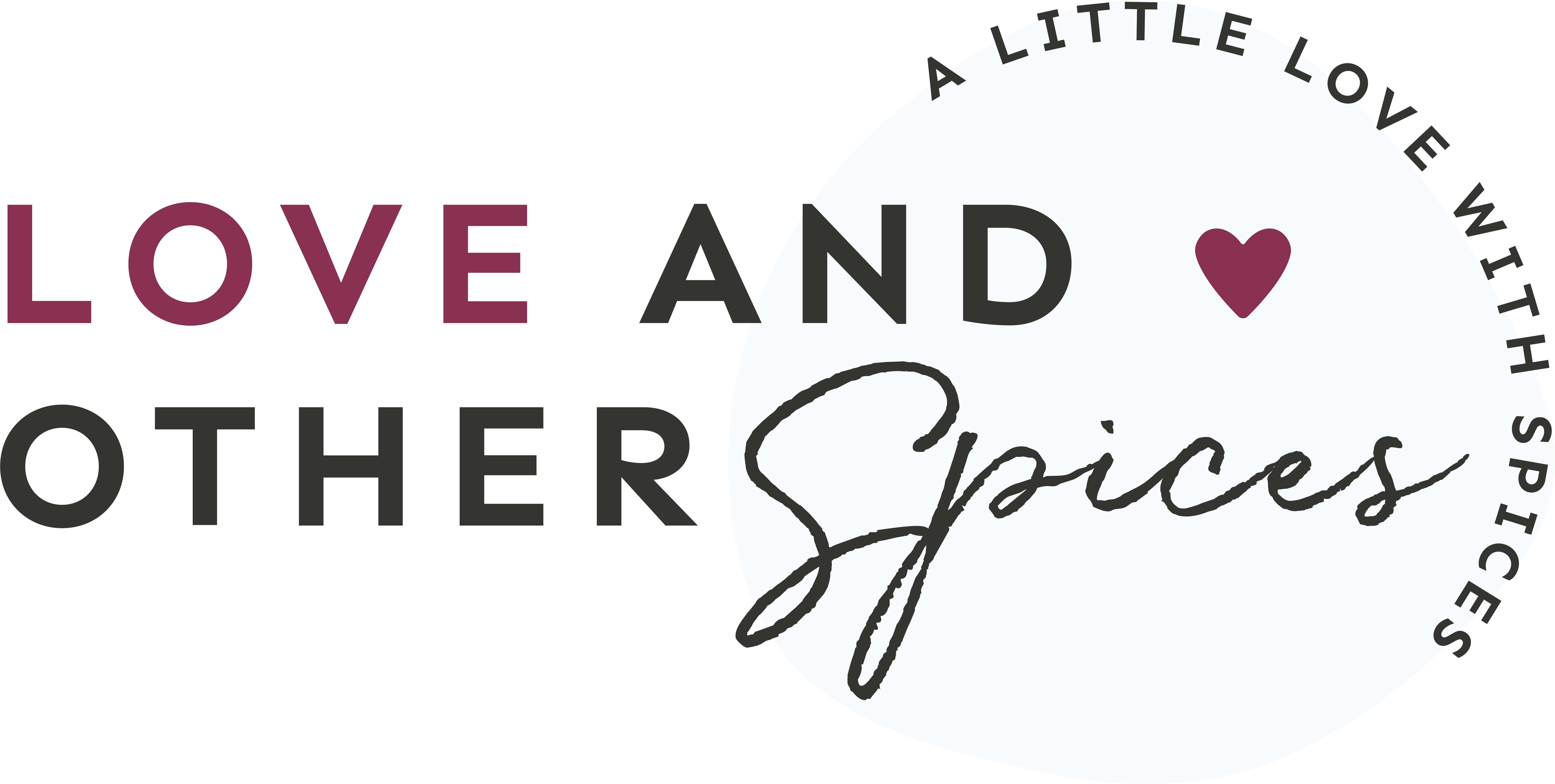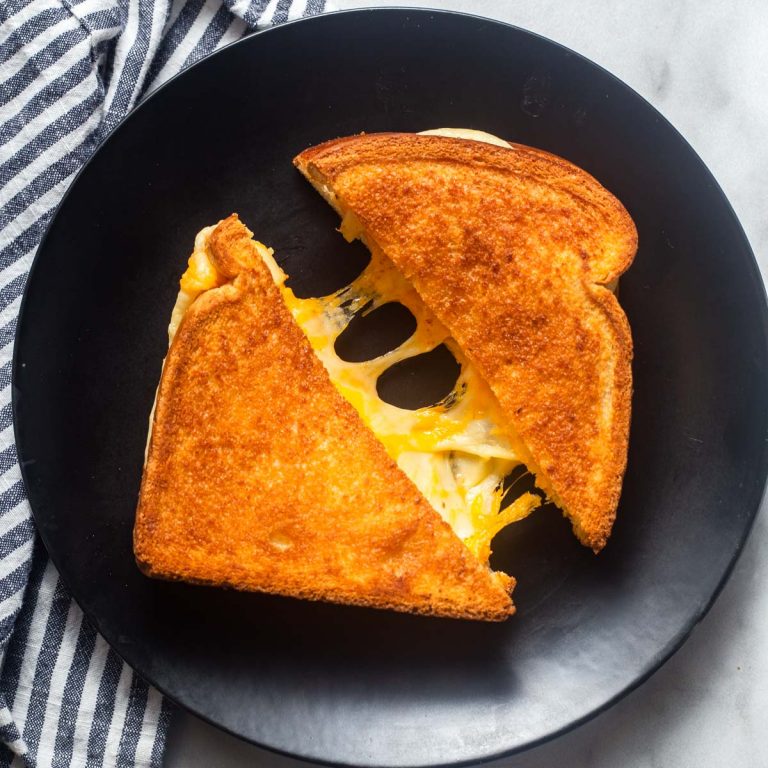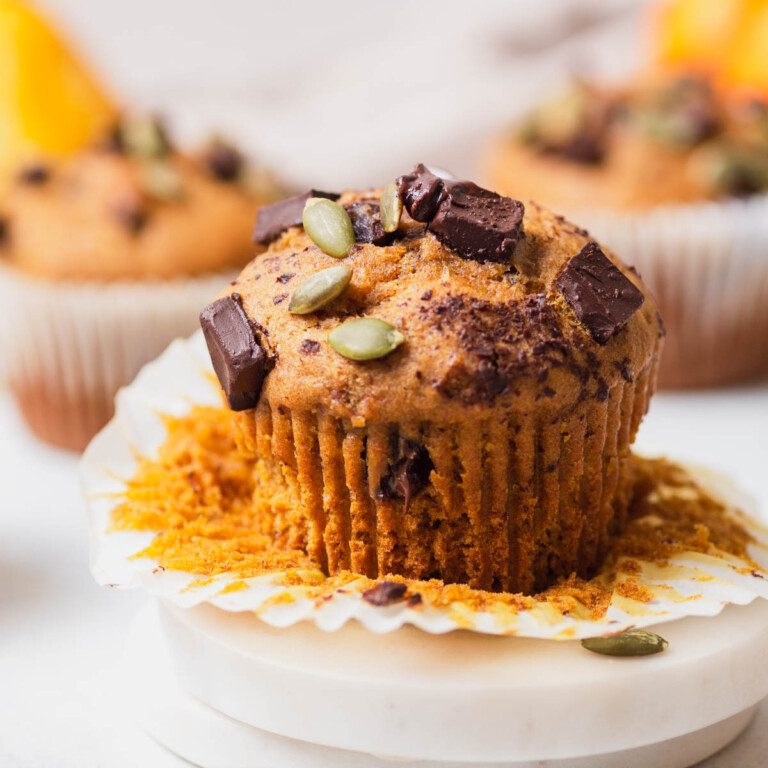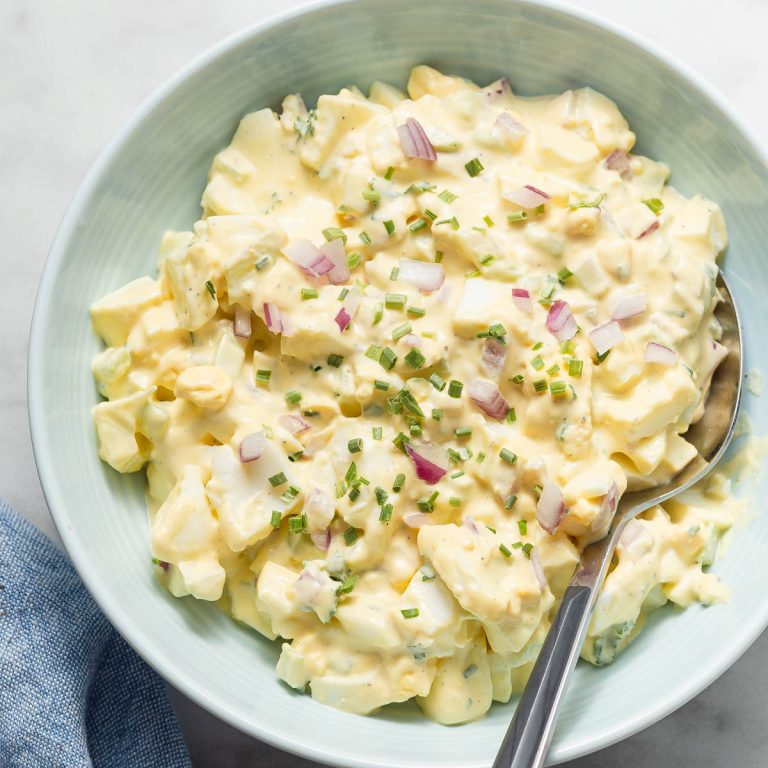How To Make Oat Flour
Nutritious, nutty and perfect to make your cookies, cakes and other baked goodies in a jiffy, oat flour is a super versatile flour that every kitchen needs to have. It’s easy to make oat flour at home and all you need is some quick cooking oats or rolled oats and a blender.
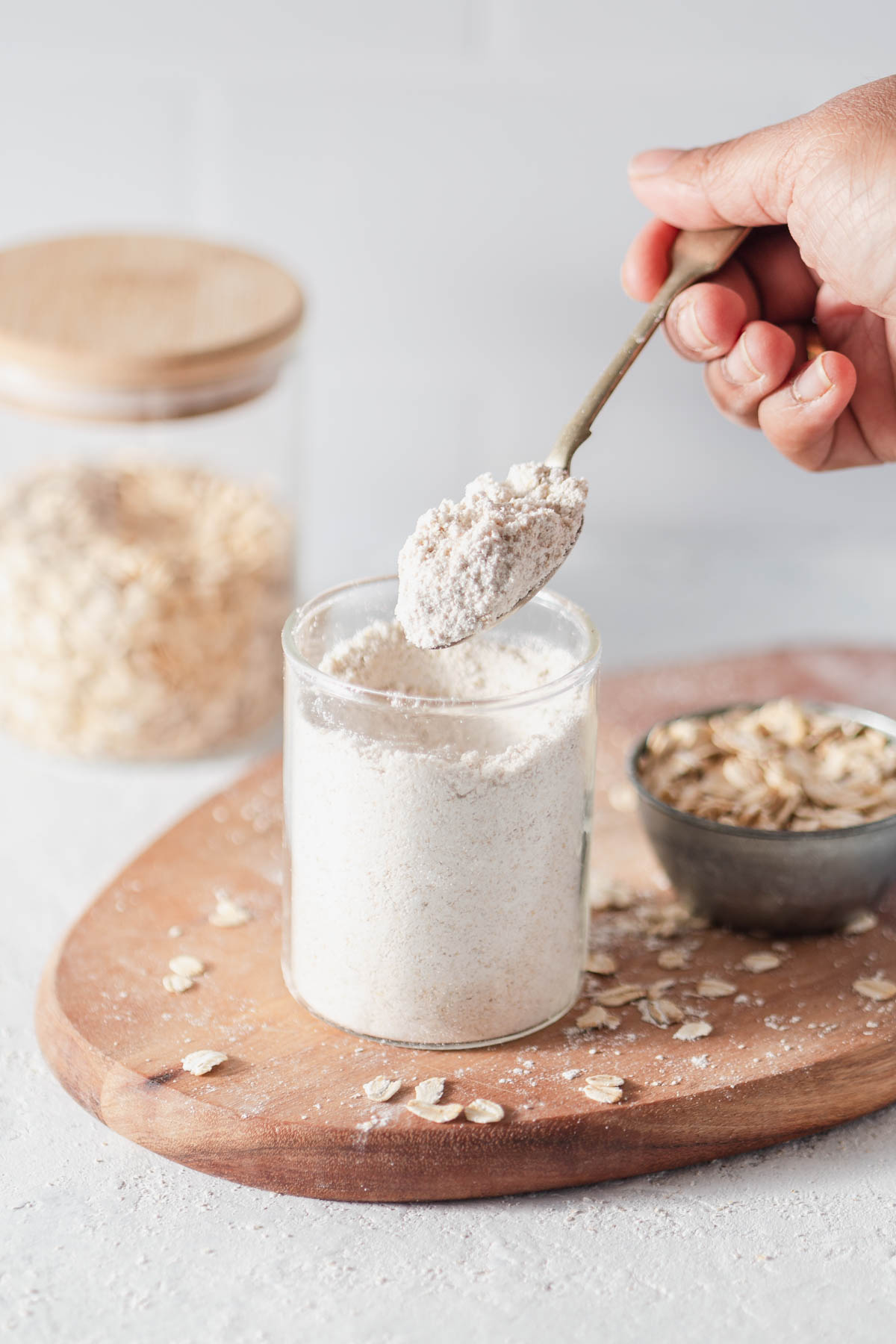
Jump to:
- benefits of oat flour
- How To Make oat flour
- what type of oats can be turned into flour
- what equipment can you use to make oat flour?
- is oat flour gluten-free
- How Much Oat Flour Do I Use To Substitute For Wheat Flour
- Is oat flour healthier than regular flour?
- how to store homemade oat flour
- Check out these oat flour recipes
- Recipe
benefits of oat flour
Oat flour, as opposed to traditional all-purpose flour, has a ton of health benefits associated with its consumption. It is a rich source of nutrients including vitamin B1, phosphorus, manganese, and magnesium. It’s also packed with plant-based protein and fiber.
It’s also a galactagogue, meaning it can increase the supply of breast milk production. I make my popular Banana Oat Lactation Muffins with homemade oat flour and incorporate this versatile flour in many baked goods.
Oat flour is great for gluten-free baking and can be substituted in many recipes that call for gluten-free flour. Make sure to buy certified gluten-free oats.
How To Make oat flour
Okay, so you’ve probably scoured the stores and aisles and still haven’t found a reliable source of oat flour that you can trust. Well, guess what? You can actually make it yourself, right in your kitchen. All you need is a few minutes, some oatmeal, and your high-speed blender, and you’re done! It is literally that easy.
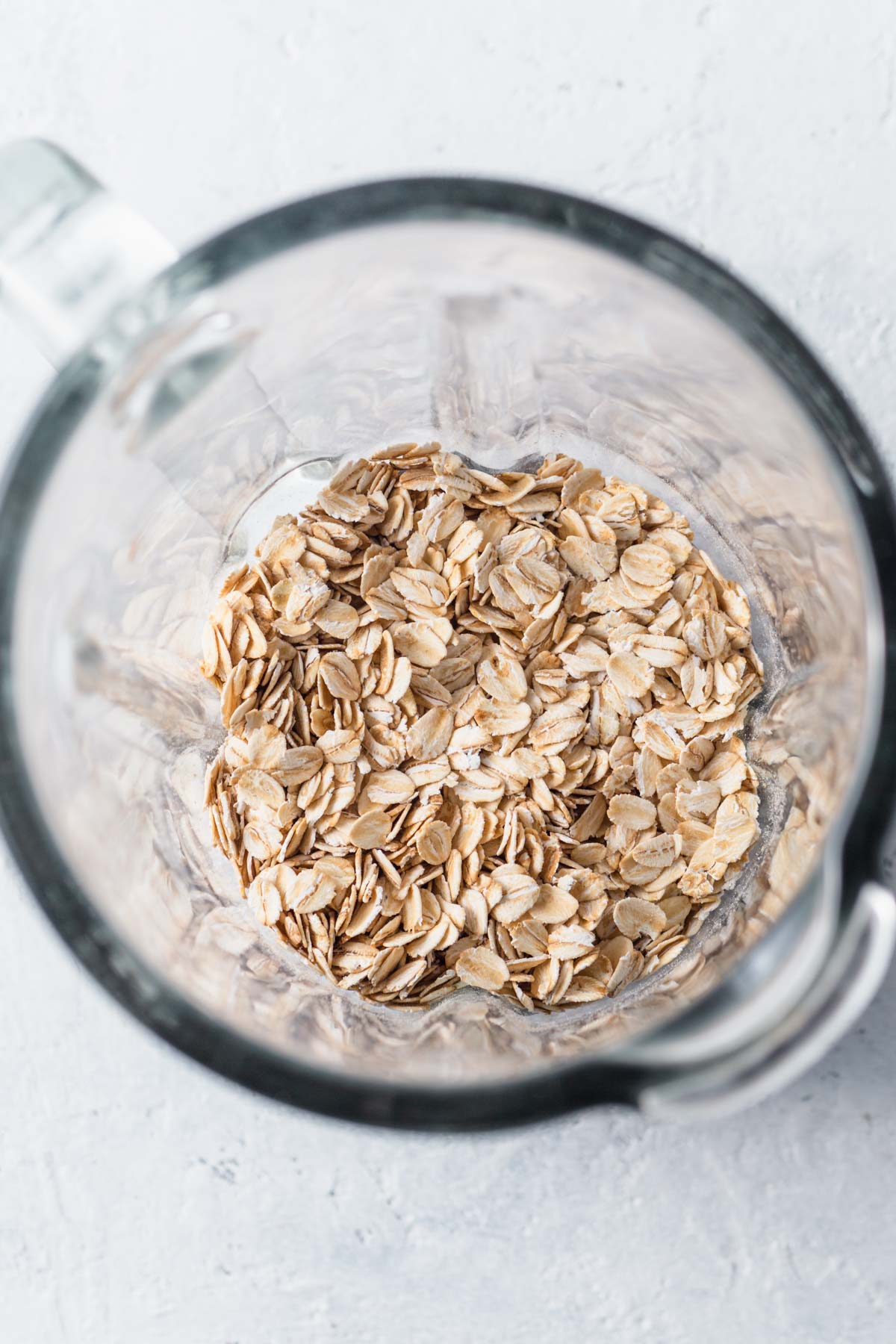
what type of oats can be turned into flour
I personally love making oat flour from scratch. Why? Well, because it is actually super simple and the process literally takes a few minutes. I can easily whip the oats flour up on a whim, and use it for whatever I’m planning to make.
Plus, when I make it myself, I know I’ll be using the best quality oats, and there’s no chance the oat flour is contaminated or contains fillers.
The key to making oats flour lies in choosing the right kind of oats. You can choose to use
- rolled oats,
- quick oats or
- quick cooking steel-cut oats.
You probably already have any of these in your pantry, and if not, you should be able to find them easily at your local grocery store or supermarket.
Steel-cut oats are usually not recommended, simply because they can be denser, and will require more blending time to reach that soft flour stage.
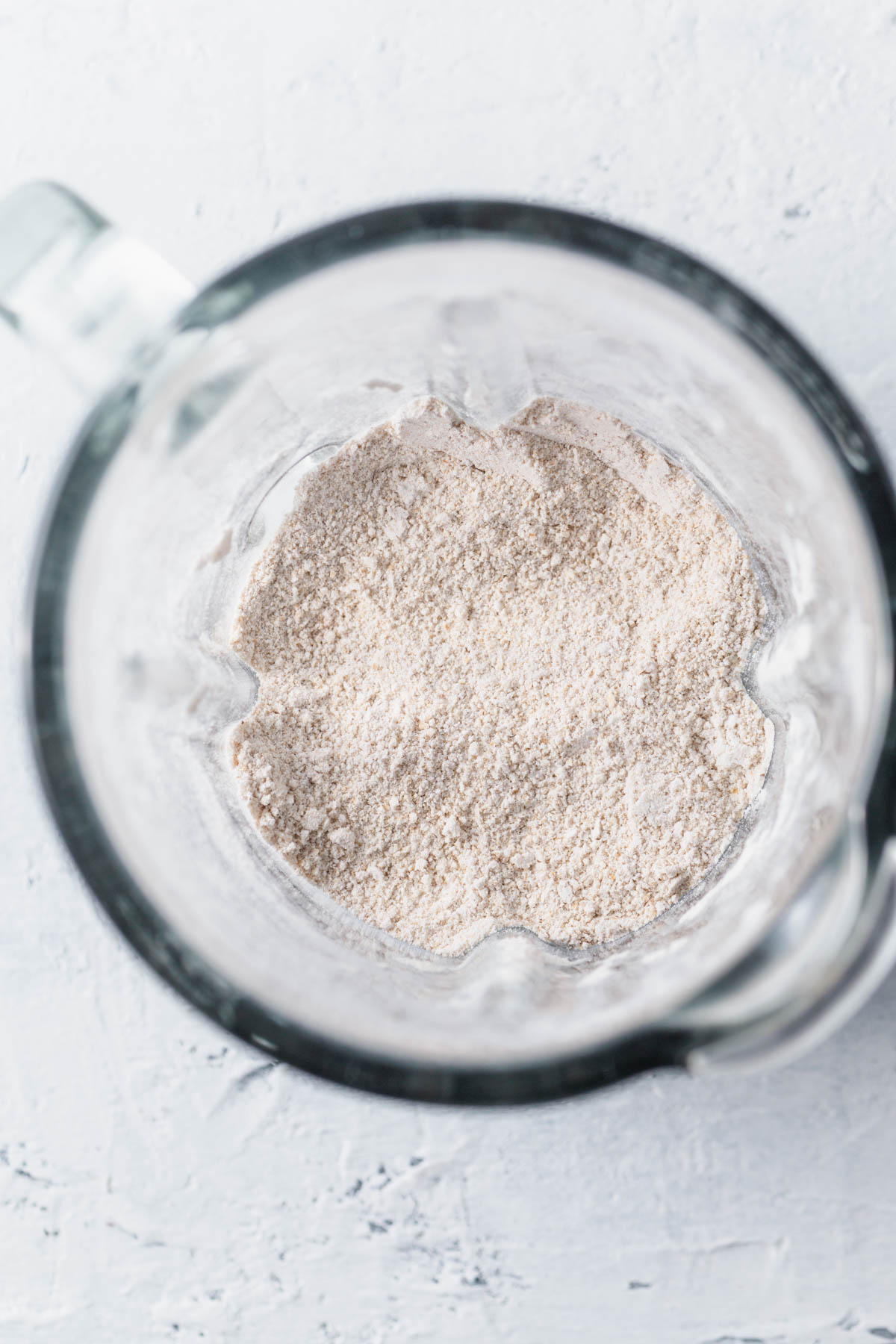
what equipment can you use to make oat flour?
It is best to stick to using a high-speed blender (think Vitamix) to make the oat flour. This will ensure you get the perfect, smooth flour you’re looking for.
If you don’t have a high-speed blender, you can make do with your regular blender and use the ice crush function, or just keep pulsing it till you get a fine powder. You might have to scrape the flour off the edges of the blender and pulse it again multiple times to ensure that you get a uniform texture.
Oat flour can be made using a blender or a food processor. I prefer not to use a food processor since it can leave the oat flour coarse in consistency. But if that’s what you have go ahead and use it but your baked good will have larger crumbs.
is oat flour gluten-free
Oat flour, in its essence, isn’t gluten-free. This is simply because most oats that are commercially available today are processed in the same facility as foods containing gluten, which is why they are most certainly not 100% gluten-free.
That said, you can actually just source gluten-free oats and use them to make your homemade oat flour. Simple!
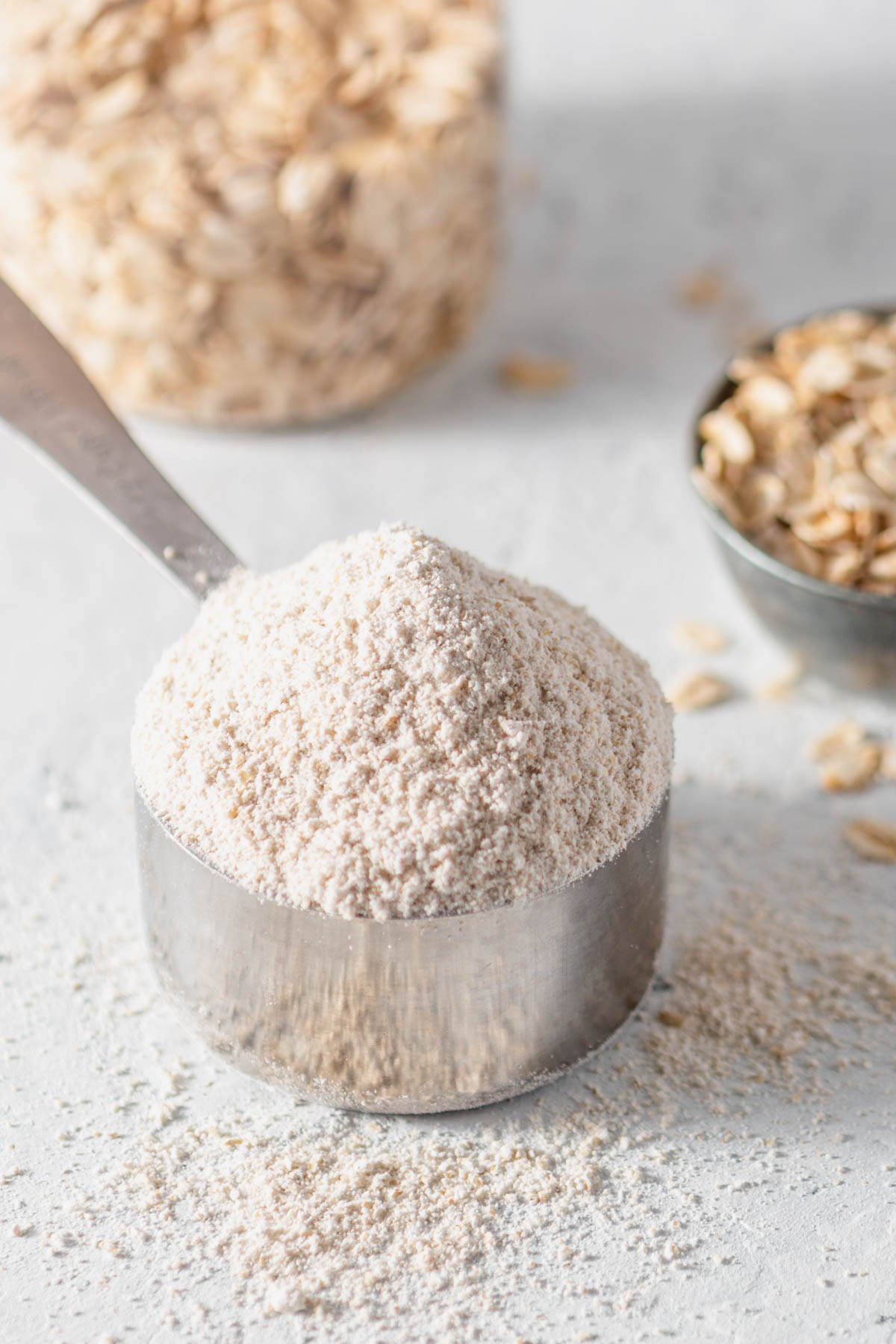
How Much Oat Flour Do I Use To Substitute For Wheat Flour
Remember that oat flour has a different texture and density as opposed to regular wheat flour, which is why sticking to a 1:1 ratio for any recipe isn’t ideal.
If your recipe calls for the use of 1 cup of flour, you can swap and use 1 ⅓ cups of oat flour as a substitute.
You can also use oat flour and all-purpose flour both in recipes that call for just plain flour.
Is oat flour healthier than regular flour?
You bet it is! All-purpose flour that you usually use to whip up all your baked goodies is highly refined and processed. Oat flour, in contrast, is much healthier and is an excellent source of vitamins, minerals, dietary fiber, and even antioxidants.
Using it in your culinary creations as a substitute for white flour can be great, not just when it comes to the nutritional aspect, but the taste too. This whole-grain flour tends to have a slightly nutty flavor, which can be a nice plus.
how to store homemade oat flour
So you finally have your batch of homemade oat flour. Now comes the fun part- storing it for later. Remember that most whole grains, including oats, contain natural oils, which is why their shelf life is a lot shorter than your regular processed flours.
You can store the oat flour in a glass jar or an airtight container for up to 3 months. The oat flour doesn’t need to be refrigerated- it can stay fresh on the shelf too! That being said, you can definitely extend the shelf life by refrigerating or by freezing the oat flour.
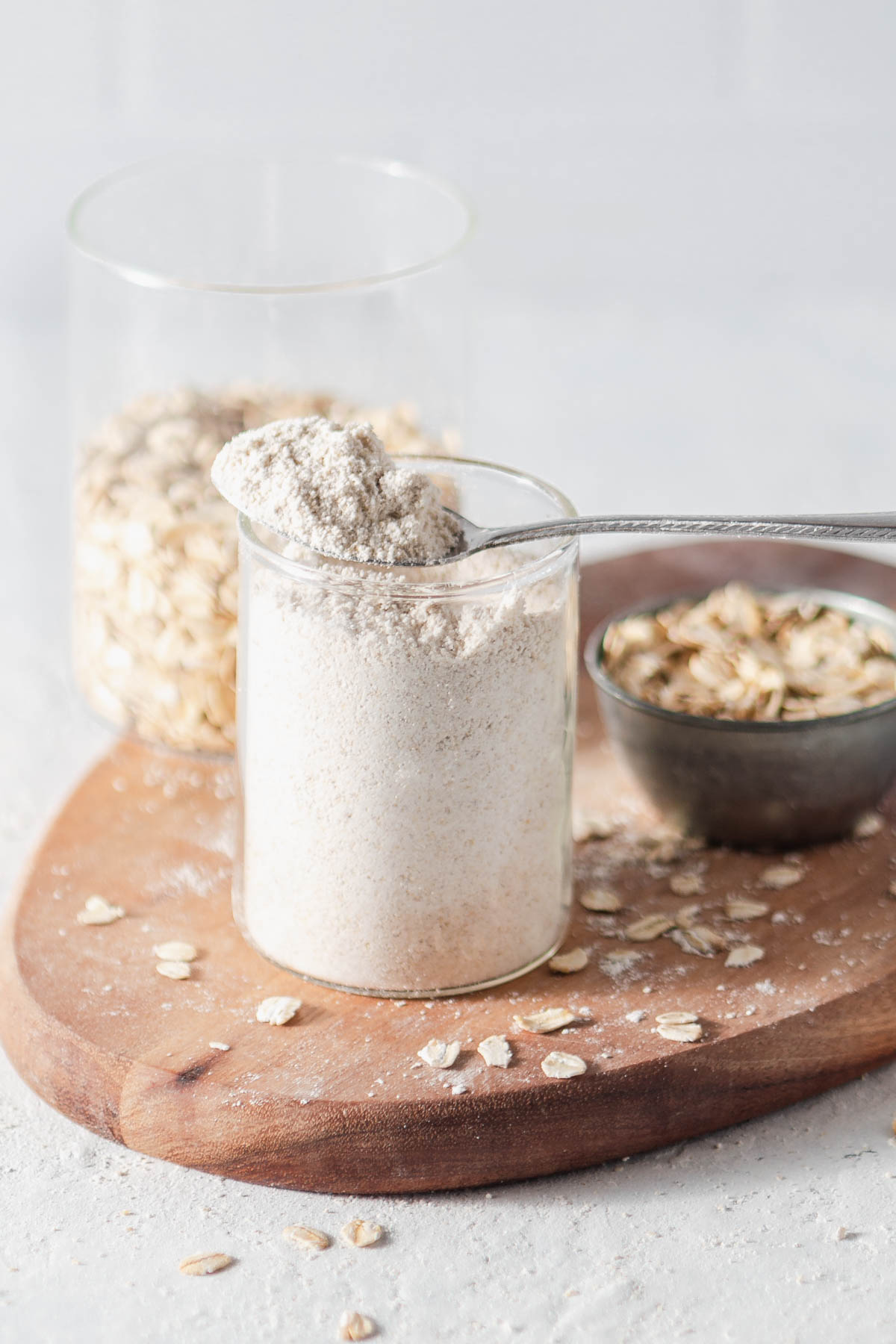
Check out these oat flour recipes
- Banana Oat Lactation Muffins
- Banana Oat Blender Pancakes
- Turkey Pot Pie (Gluten-free)
- Vegan Chocolate Donuts
- Vegan Oat Flour Pancakes
- Oat Flour Brownies
- Oat Flour Pizza Crust
- Oat Flour Crepes
- Vegan Banana Oat Pancakes
Love air frying? You can also follow us on Facebook, Instagram, or join our Free Facebook Air Frying Group.
Recipe
How To Make Oat Flour
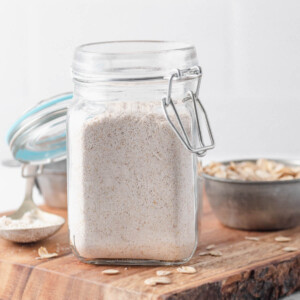
Equipment
- Blender
- Food Processor
Ingredients
- 2 cups oats quick cooking, rolled oats
Instructions
- Add oats to a high-speed blender or a food processor. Pulse until you get a fine powder like consistency.
- Transfer oat flour to a glass jar or an airtight container.
- Store at room temperature for 3 months. Refrigerate to extend the shelf life or freeze up to 6 months.
Notes
- For recipes needing 1 cup of all-purpose flour, use 1 1/3 cup of oat flour.
- If you’re using steel-cut oats, you may need to blend for longer.
